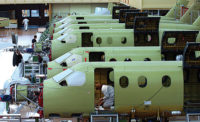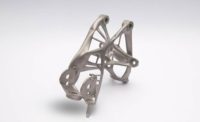There’s no mistaking the specialty of Tier 1 supplier American Axle & Manufacturing (AAM). This company designs and manufactures driveline and drivetrain systems for light trucks, SUVs, crossover vehicles and passenger cars. System components include axles, chassis modules, driveshafts, transmission parts, transfer cases and metal-formed products.
Established in 1994 after purchasing five U.S. plants from General Motors, AAM has grown significantly the past two decades. Today, the company operates 23 plants and offices in 13 countries, with its headquarters in Detroit.
Being an industry leader, however, doesn’t mean AAM is exempt from challenges. One of the main ones in recent years has been redesigning traditional metal parts so they are smaller and lighter, but still meet strength requirements.
Jerry Chung, Ph.D, senior manager of analytical engineering for AAM, says the company has relied on solidThinking’s Inspire design software to meet this challenge. He says AAM has used the software on multiple projects over the last sev-eral years.
According to Chung, OEMs increasingly prefer lighter-metal parts because they provide two key benefits: easier handling on the assembly line (which leads to increased production) and improved automobile performance on the road (better fuel economy).
One customer recently asked AAM to redesign an axle carrier. Step one of the process requires engineers to import a CAD file of the part into Inspire to determine the part’s maximum design space. After this, they simulate the part’s reaction to vertical beaming, gear forward and reverse loading conditions, as well as stress, frequency and other manufacturing constraints.
These tests help determine the part’s displacement, factor of safety, and percent of yield, tension and compression. With this data, engineers refine the part in CAD to the ideal shape.
In the end, AAM engineers produced a part that is 20 percent smaller and lighter (38.34 kilograms vs. 47.97 kilograms) than the original. Equally important, the carrier is designed with vertical support ribbing that reduces deflection and bend-ing.
Chung says the engineers most like the software’s shape controls feature, which assures part manufacturability. With this tool, engineers accurately determine maximum and minimum design space and create symmetry.
Also helpful is the software’s ability to easily clean up and remove part features such as imprints, rounds, fillets
and holes. This reduces design iterations and material consumption. In addition, Chung says the software’s straightforward user interface is easy to learn and usually requires just a few hours of training.
For more information on design software, call 248-526-1920 or visit www.solidthinking.com.





